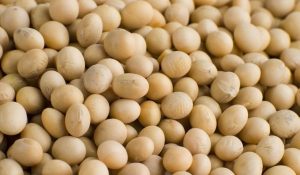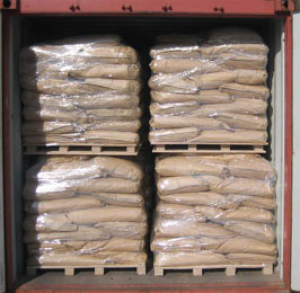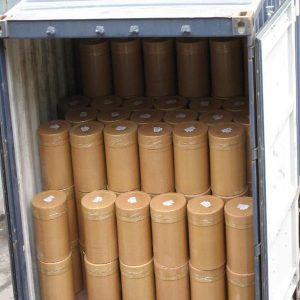Ferrous Gluconate MSDS
Ferrous Gluconate E579 MSDS
1. SUBSTANCE IDENTIFICATION
- 1.1. Product Name: Ferrous Gluconate E579
- 1.2. Description: Ferrous Gluconate is a iron salt of gluconic acid manufactured through chemical synthesis.
- 1.3. Chemical Formula: C12H22FeO14
- 1.4. Molecular weight: 446.14
- 1.5. CAS #: 299-29-6
- 1.6. EINECS #: 206-076-3
- 1.7. Manufactured by: China manufacturer.
- 1.8. Supplied by: China Ferrous Gluconate E579 manufacturer.
- 1.9. Usage: In food as food additive
2. Composition
- 2.1. Ferrous Gluconate: >97%
- 2.2. Hazardous impurities: Mercury 3ppm Max, Lead 10ppm Max.
3. Physical/Chemical Characteristics
- 3.1. Physical State: powder.
- 3.2. Appearance: Gray-green or yellowish powder
- 3.3. Odor: Odorless.
- 3.4. pH: 7.0 – 8.5
- 3.5. Melting point/range: Not available
- 3.6. Boiling point: Not available
- 3.7. Bulk density: Not available
- 3.8. Solubility: soluble
4. Stability/Reactivity
- 4.1. Chemical Stability: Stable under normal temperatures and pressures
- 4.2. Shelf Life: 12 months period
- 4.3. Hazardous decomposition: Oxides of carbon and iron.
- 4.4. Hazardous polymerization: Will not occur
- 4.5. Incompatible with: Strong oxidizers.
5. Handling/Storage
- 5.1. Storage: Stored in a cool and dry place and Keep away from strong light and heat
- 5.2. Handling precaution: Containers of this material may be hazardous when emptied. Since emptied containers retain product residues (vapor, liquid, and/or solid), all hazard precautions given in the data sheet must be observed.
6. Exposure Control
- 6.1. Engineering Controls: Use process enclosures, local exhaust ventilation, or other engineering controls to keep airborne levels below recommended exposure limits. If user operations generate dust, fume or mist, use ventilation to keep exposure to airborne contaminants below the exposure limit.
- 6.2. Respiratory protection: NIOSH/MSHA or European Standard EN 149 approved respirator
- 6.3. Eye Protection: Protective eyeglasses or chemical safety goggles
- 6.4. Skin Protection: Wear appropriate protective gloves and clothes to minimize skin contact.
- 6.5. Other: Consult professionals if Ferrous Gluconate need to be handled under some special conditions.
7. Hazards Identification
- 7.1. Hazardous overview: Ferrous Gluconate is Hazardous in case of ingestion. Slightly hazardous in case of skin contact (irritant), of eye contact (irritant), of inhalation.
- 7.2. Contact with eyes: Dust can cause eye irritation. Symptoms include stinging, tearing, redness, and swelling of eyes.
- 7.3. Contact with skin: May cause skin irritation. Symptoms may include redness, burning, and swelling of skin.
- 7.4. Ingestion: Nausea, vomiting, diarrhea and gastrointestinal hemorrhage may develop.
- 7.5. Inhalation: Noncardiogenic pulmonary edema may develop with severe intoxication.
- 7.6. Other: Not Applicable
8. First Aid Measures
- 8.1. Contact with eyes: If symptoms develop, immediately move individual away from exposure and into fresh air. Flush eyes gently with water for at least 15 minutes while holding eyelids apart; seek immediate medical attention.
- 8.2. Contact with skin: Remove contaminated clothing. Wash exposed area with soap and water. If symptoms persist, seek medical attention. Launder clothing before reuse.
- 8.3. Ingestion: Seek medical attention. If individual is drowsy or unconscious, do not give anything by mouth; place individual on the left side with the head down. Contact a physician, medical facility, or poison control center for advice about whether to induce vomiting. If possible, do not leave individual unattended.
- 8.4. Inhalation: If symptoms develop, move individual away from exposure and into fresh air. If symptoms persist, seek medical attention. If breathing is difficult, administer oxygen. Keep person warm and quiet; seek immediate medical attention.
9. Fire and Explosion Data
- 9.1. General information: May be combustible at high temperature.
- 9.2. Flash point: Not available
- 9.3. Ignition control: Avoid Daidzein ignition sources Ferrous Gluconate dust might be generated.
- 9.4. Dust control: Keep the handling area with adequate ventilation
- 9.5. Extinguishing Media: Not available
- 9.6. Spills/Leaks: Use appropriate tools to put the spilled solid in a convenient waste disposal container. Finish cleaning by spreading water on the contaminated surface and dispose of according to local and regional authority requirements.
10. Transport Information
- 10.1. No special requirements and no restrictions on transportation by land, sea or air.
11. Ecological Information
- 11.1. Ferrous Gluconate is fully degradation biodegradable.
12. Other Information
- 12.1. The information in Ferrous Gluconate E579 MSDS was obtained from current and reliable sources. However, the data is provided without any warranty, expressed or implied, regarding its correctness or accuracy. Since the conditions for use, handling, storage and disposal of this product are beyond our control, it is the responsibility of the user both to determine safe conditions for use of this product and to assume liability for loss, damage, or expense arising out of the products improper use. No warranty expressed or implied regarding the product described herein will be created by or inferred from any statement or omission in the Ferrous Gluconate E579 MSDS. Various federal, state, or provincial agencies may have specific regulations concerning the transportation, handling, storage, use, or disposal of this product which may not be reflected in the Ferrous Gluconate E579 MSDS. The user should review these regulations to ensure full compliance.





 Xanthan gum E415 is a gum manufactured through a biological fermentation process. Xanthan gum’s unique functional properties make it a very versatile stabilizer and thickening agent used in a variety of finished food products including salad dressings, sauces, and many others.
Xanthan gum E415 is a gum manufactured through a biological fermentation process. Xanthan gum’s unique functional properties make it a very versatile stabilizer and thickening agent used in a variety of finished food products including salad dressings, sauces, and many others.



